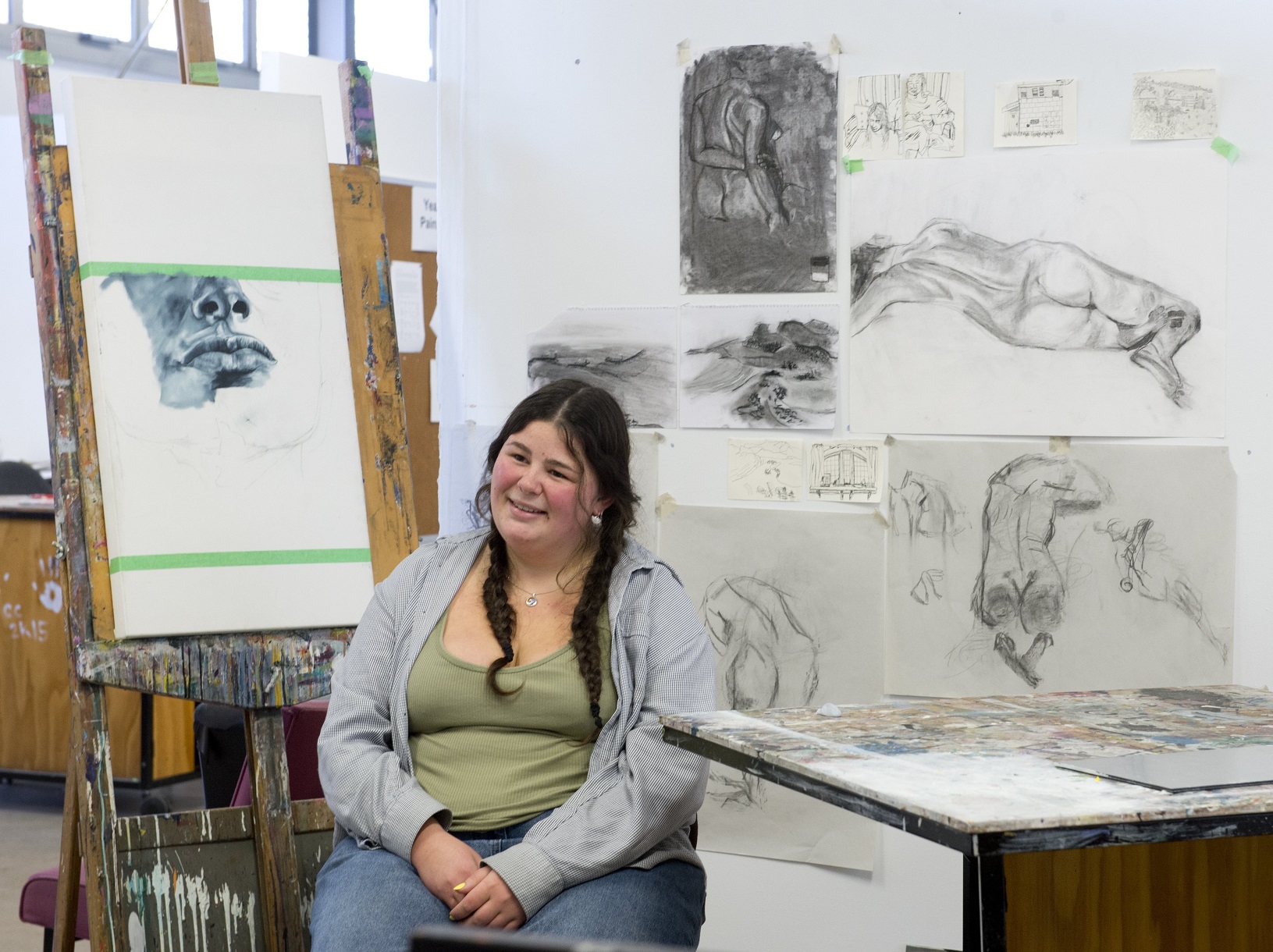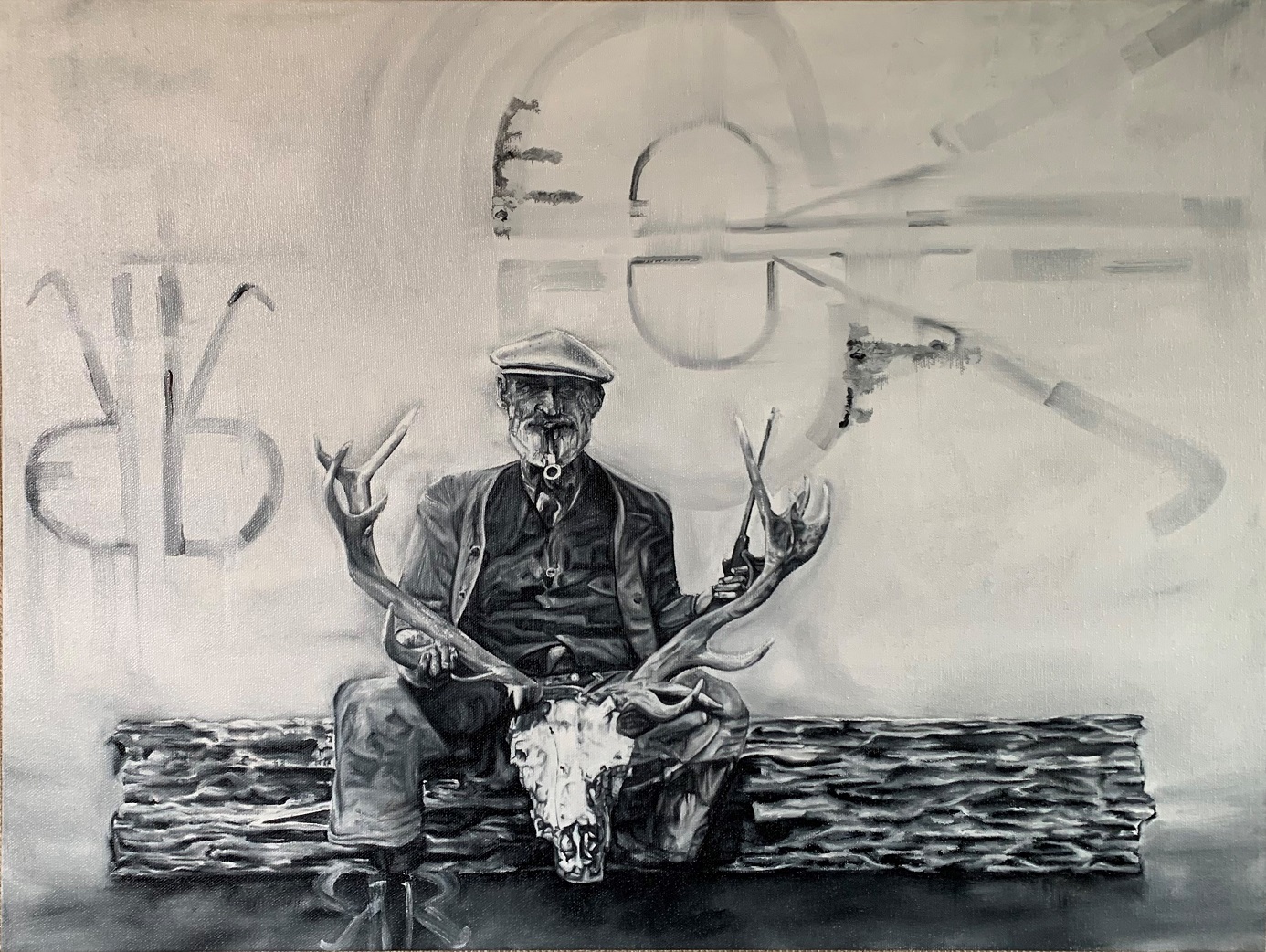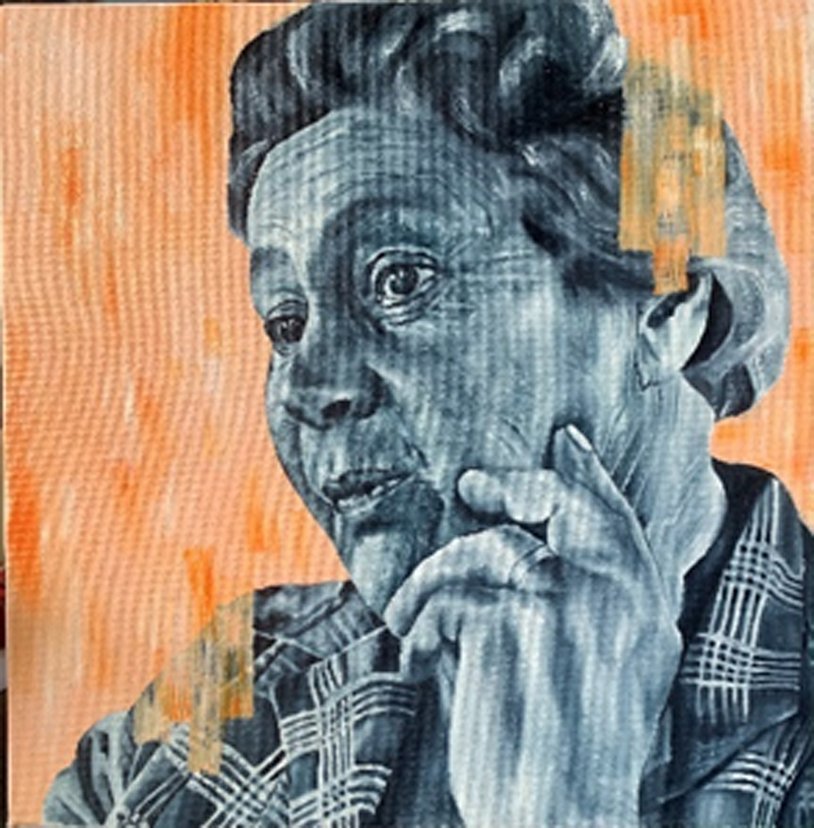
Living at the other end of the country from where she was born and raised, and painting her great-great-grandfather, has made art student Annabel Bowen feel much closer to home.
The oil painting of George Canning Ormond (known as G.C.) with a pipe in his mouth, holding a trophy stag’s head, is one of 44 portraits selected from 96 entries to make the finals of the Kiingi Tuheitia Portraiture Award, which is aimed at inspiring a new generation of Māori artists to create portraits of their tūpuna (ancestors).
For Bowen the decision to enter the awards came at the last minute after organisers extended the deadline due to Cyclone Gabriel.
"It was very rushed."
She asked her mother back home on the family farm on the Māhia Peninsula, in the North Island, to search through family photographs and send some to Dunedin, where Bowen is studying towards an art degree at Dunedin School of Art.
"She sent me heaps of my tūpuna but when I saw this image of G.C. with the pipe in his mouth, holding this massive 17-pointer [stag] it captured me. He seems so calm. I really liked it."
The photograph was taken in 1919 at Lake Waikaremoana, where G.C. (1861-1939) went trout fishing and deer hunting.
"He loved going there and they’re similar things we still love doing now. It’s a beautiful place where we’d go fishing, water skiing, do lots of walks.
"It’s like it is mirroring my life."
Doing the painting also inspired Bowen to look further into G.C.’s life. He married Maraea Kiwi Te Ratahi Ormond (nee Wharakete), a wāhine toa who descended from Rongomaiwahine, the ancestor of the Māhia Peninsula, and together they had 16 children.
Bowen’s father is one of his descendants. So she got to work drawing out G.C. on canvas and then using oils to paint him.
However, she was unsure about what his background would be.
"It came naturally in the end."

"It represents my iwi in some shape or form. It’s cool being so far away from home yet still feeling close to it."
The detail she gets into her faces comes from being a perfectionist, she thinks.
"I’m really attracted to detail."
It is the second time Bowen (20) has been a finalist in the portraiture competition — the first was in the inaugural competition in 2001 with a portrait of her great-grandmother Nancy, (1910-85), the 15th child of G.C. Ormond. Nancy married Roy Bowen in 1931 and they farmed at "Pukeatua" — Bowen’s family farm.
"I did not know much about them until I started this and it’s been interesting to learn a bit more about their stories and that side of my family."
She found some interesting stories about G.C., who took in many survivors of the steamer Tasmania which sank after gales drove it into rocks off Table Cape, Māhia Peninsula, in July 1897, on its way from Auckland to Dunedin.
As a thank-you they gave her grandfather many treasures, she has been told.
He was also involved in the very early work on the restoration of the Whangawehi catchment which now has a coast-to-coast 13km walk, the Te Aratia Walkway, a community project Bowen’s family has been involved in ever since.
Family has played a big part in Bowen’s creativity from the very beginning. While her two sisters are in the medical field, she has embraced the arts.
It could be because while her sisters were away at their swimming lessons, the younger Bowen got to spend time with her artist grandmother.
"I’d paint with her instead in Gisborne. She’d send me outside for seven sticks and get me to paint them or a flower. She nurtured that appreciation of beauty and excellence."
Now she is studying art, Bowen’s appreciation of her grandmother and what she accomplished has only increased.
"She was so awesome. I love her style. It’s more abstract, quite different to me — although I definitely didn’t realise it at the time, as you don’t when you are just 6 years old."
It stayed with her and Bowen took up art in her senior years at school gaining excellence endorsement in NCEA level 3 and being awarded the year 13 art award at Iona College.

Although she tried out different ways of making in her first year at art school, Bowen still came back to painting.
While her work has become quite monochrome, she hopes to explore more colour and try to expand her repertoire from people to landscape.
"People seem to work for me but now is the time for me to explore new things."
She admits to jumping into painting a bit too quickly sometimes and hopes to work on her drawing skills and think more about compositional ideas.
"The process changes every time, deciding when something is ready or not. There are so many things I’m still to explore."
Inspiration comes to her from everyday life, even going to the supermarket or at the library where she gets distracted very easily.
"It’s good for me to have a task and I look at things and think they are cool. I’m a terrible people-watcher."
Coming so far south has been a bit of a challenge, even though it is still close to the coast that she loves. She thought by now she would be adjusting to the cooler temperatures but still finds it cold.
"But it’s a cool place and I have made some great friends here."
Dunedin artist Heramaahina Eketone, of Ngāti Maniapoto and Waikato descent, has also been selected as a finalist in the awards for her work Ngaa Houhanga Rongo.
Also a teacher at Te Wananga o Aotearoa, a moko apprentice under Te Wharemoko o Ahipoutu, and a recently registered ACC social worker, Eketone, in her work, tells various stories of forgiveness and making peace throughout five generations, based on her grandfather’s tupuna.
The award, a partnership between the Office of the Kiingitanga and the New Zealand Portrait Gallery Te Pūkenga Whakaata, will be announced on May 24.
The finalist artworks were selected by a panel comprising renowned artists multi-disciplinary, portrait artist Graham Hoete aka "Mr G" (Ngati Awa, Ngai Te Rangi, Ngati Ranginui), researcher, artist, arts educator and curator Steve Gibbs (Ngāi Tāmanuhiri, Rongowhakaata, Rongomaiwahine), and artist Lisa Reihana (Ngā Puhi, Ngāti Hine, Ngāi Tūteauru, Ngāi Tupoto) who is known for her portraits and digital art.
Finalists’ works will be exhibited at the New Zealand Portrait Gallery Te Pūkenga in Wellington from May 25-August 20 before touring the country.












